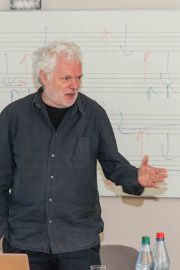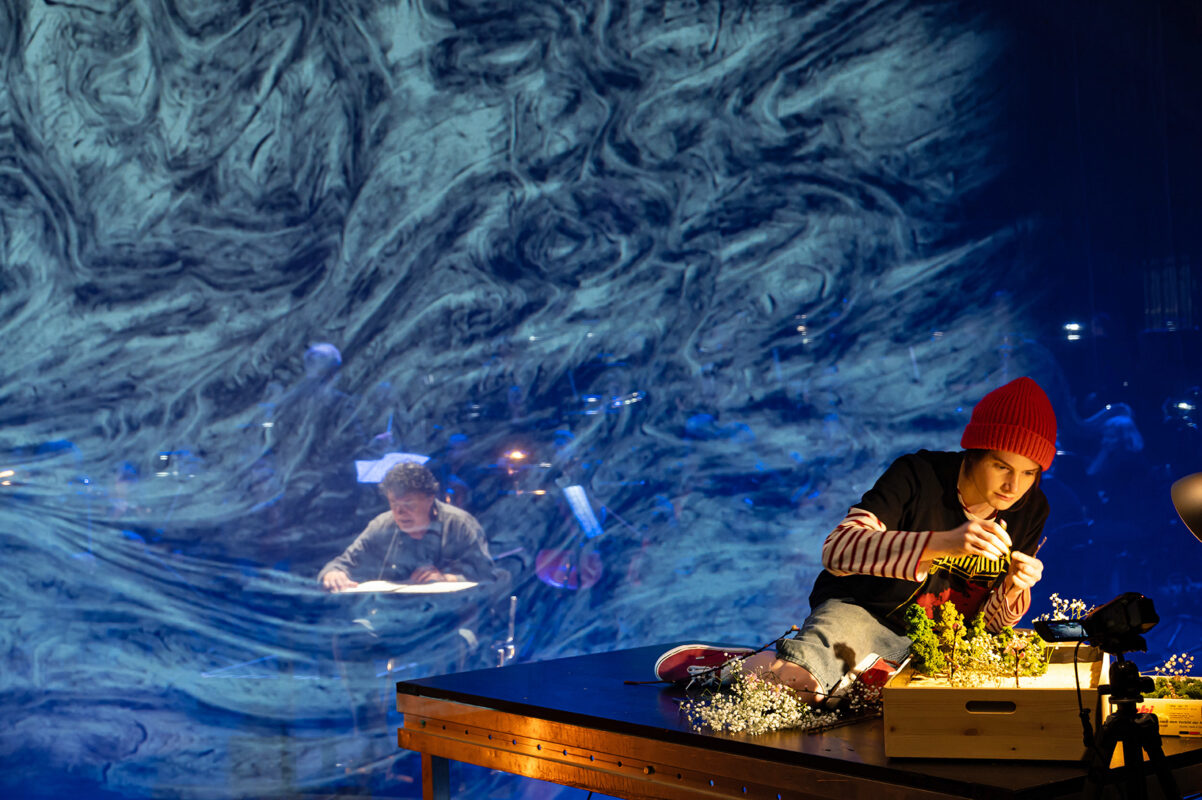Clash! or Mash?
The 71st spring conference of the Institute for New Music and Music Education in Darmstadt confirmed: "The works of art that we produce must withstand all eyes."

Conflicts, differences, contradictions, friction, anger, war, reconciliation, integration, appropriation - under the motto clash!(?) the Darmstadt Spring Conference of the Institute for New Music and Music Education in Darmstadt (INMM) focused on the tense interaction between cultures and identities, but above all on the clash of basic aesthetic views (not only) in contemporary music.
Samuel Huntington's seminal text The Clash of Civilization (1996) hovered in the air, but the conference motto encompassed much more. For contemporary music has long since ceased to be characterized by the Either-orbut rather of the As well as. In hybrid mixed forms, contrasting genres, formats, media and materials merge into something new, sometimes in opposition to more traditional approaches. The potential for conflict in politics and society, as well as everyday references, can be experienced in a variety of ways in today's music.
Following a dense introductory presentation by Jörn Peter Hiekel, such areas of tension were discussed in four thematic blocks under the headings Hybrid identities, inner clashes, clashes of generations or spatial clashes discussed. In addition to numerous international guests from the fields of musicology, philosophy, art and media theory, the composers Heinrich Goebbels, Sergei Nevsky, Joanna Bailie, Johannes Kreidler, Sandeep Baghwati and Sarah Nemtsov were heard at lectures and concerts.
Beyond drawers
Using works by Giaconto Scelsi and Horaţiu Rădulescu, violist Vincent Royer made it clear in the opening discussion concert how distinctive individual styles have emerged in the offside - under the keywords "spherical sound" or "spectralism". As counter-models, these would have developed in contrast, if not Clash to the serialism that characterized the time.
Sandeep Baghwati found his approach of "multi-headed creativity", analogous to this, only from a distance to European new music, in Canada. "I always wanted to work more with wonderful musicians than to make wonderful music," says Baghwati. In his collaborative works, the clash between the coming together of all participants and the dissolution of composer authorship go hand in hand. In projects such as Sound of Montreal and Matralabin which musicians from different cultural or traditional areas find new forms together, he explained his model of trans-traditional music-making.
"It's not that I quote pop music as something foreign to me, but it all comes together in me," Sarah Nemtsov said. Not Clashbut Fusion The focus for them is on what White eyes erased (2014/15), interpreted by the Ensemble Mosaik. For Nemtsov, roots are more a grown present than a past. With Places-Mekomot she presented a project in her lecture that was dedicated to combining contemporary music with old Jewish songs. It was not easy to subsequently "free herself from the pigeonhole" in the perception of the new music scene. Because there is a fine line between hierarchization and stigmatization.
Action or reaction?
Like quite a few other speakers, Rainer Nonnenmann sees the works of the generation of digital native composers, whose music was another focal point, rather as (fruitful) Mash as (bulky) Clash. The fact that new trends are often given labels by composers, on the other hand, primarily expresses the affiliation to communities of experience and can still lead to exclusion.
Johannes Kreidler then brought Clash In persona, he brought one of the basic ideas of the conference into play, namely to question the culture of discussion in contemporary music. With eloquent side blows, underpinned by clever quotes (Brecht: "Where people earn better, they are friendlier to each other"), he polarized fiercely. What in the debate was action, what was reaction, and whether person and work were one (Mash) or whether they should be considered separately is up to the audience, as Kreidler, who also sees himself as a conceptual artist, often stages decidedly controversial pieces. The fact that, with his piece performed by Ensemble Mosaik the previous evening External work (2009) is just as playful in its fundamental criticism of globalization and thus takes a clear stance on issues of world politics, is definitely to be credited to him.
Martin Scherzinger (New York) also took a pointedly critical stance: On the basis of a research project, he described the consistent omission of the musical practice of non-Western centers in the historiography of music influenced by the Western Occident. Even in the development of today's music software for a supposedly gender-flexible Mash-This tendency is continuing in our society. Algorithms are characterized by a Euro-genetic industrial habitus and do not, for example, capture an elastic rhythmicity of African or Indian character - his conclusion: "White supremacy has now found a new way."
-

- Photo: Christoph Rau/INMM, Darmstadt
- Heiner Goebbels
"It is indeed the case that I am in Darmstadt for the first time, whether that is coincidence or irony," Heiner Goebbels stated at the beginning of his lecture. The boundaries between genres and institutions, which also contain a potential for conflict, are rarely more obvious, as Goebbels is perceived far more in the theater context than in the music context. His diverse compositional oeuvre combines music, scene, video, text and props into a polyphonic whole and moves between all genres. Goebbels juxtaposes the individual elements in their incompatibility without merging them. Clash in the sense of transparency and coexistence is at the center. Only the viewer, the actual protagonist, creates an individual reading from the polyphony of voices. "The works of art that we produce must withstand all gazes," says Goebbels.
In the concluding concert, powerfully interpreted by members of the Ensemble Modern, the works Surrogates (1994/2015) and Heracles 2 (1991) is as good to the ear as it is to the eye.
Link to the







